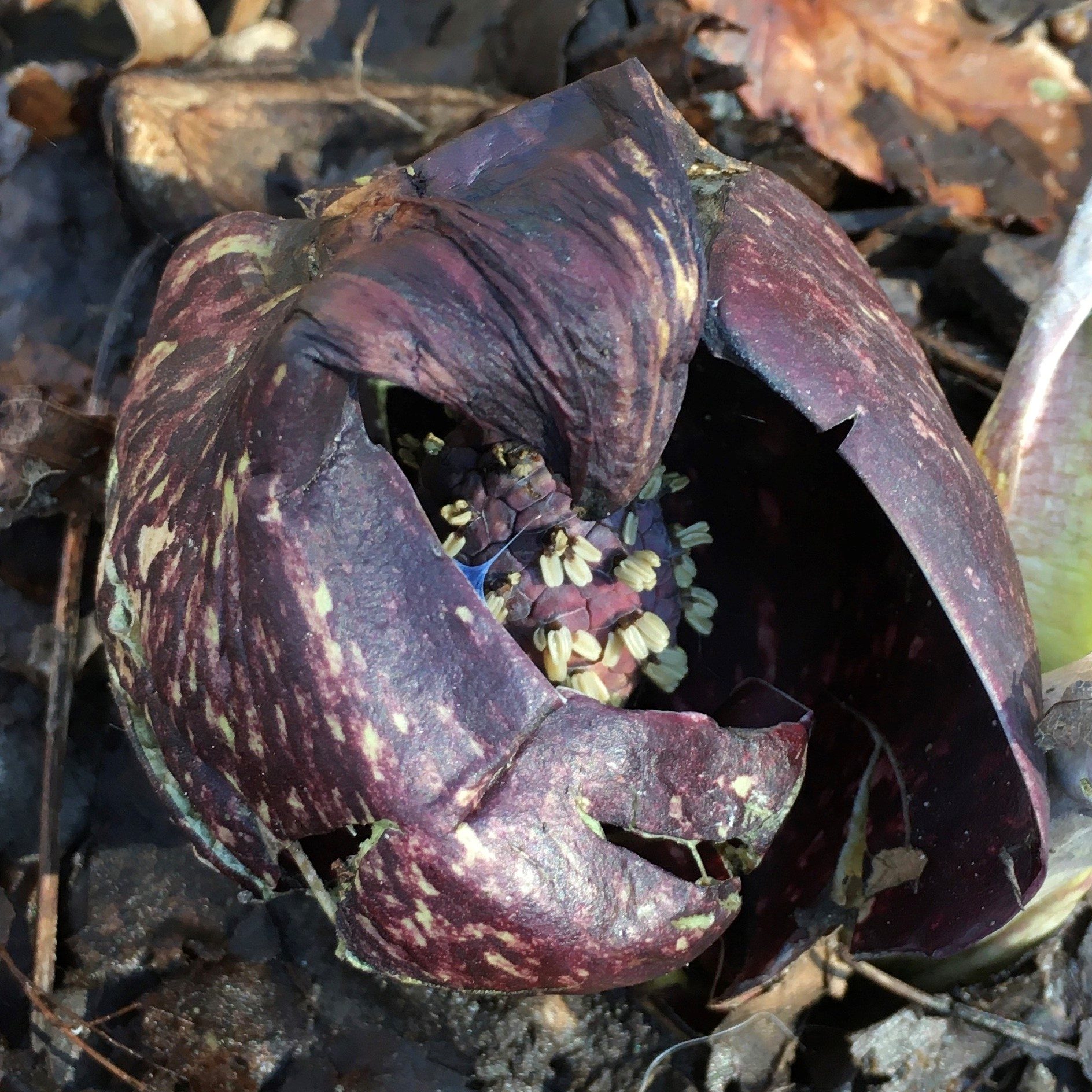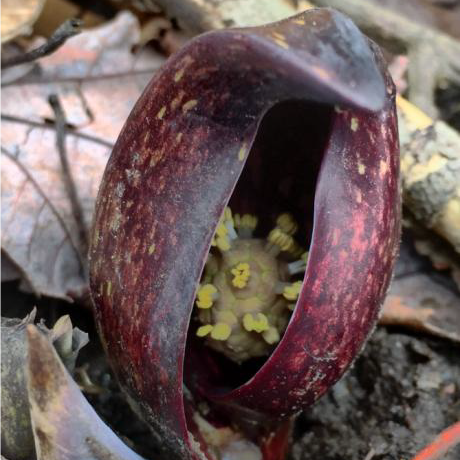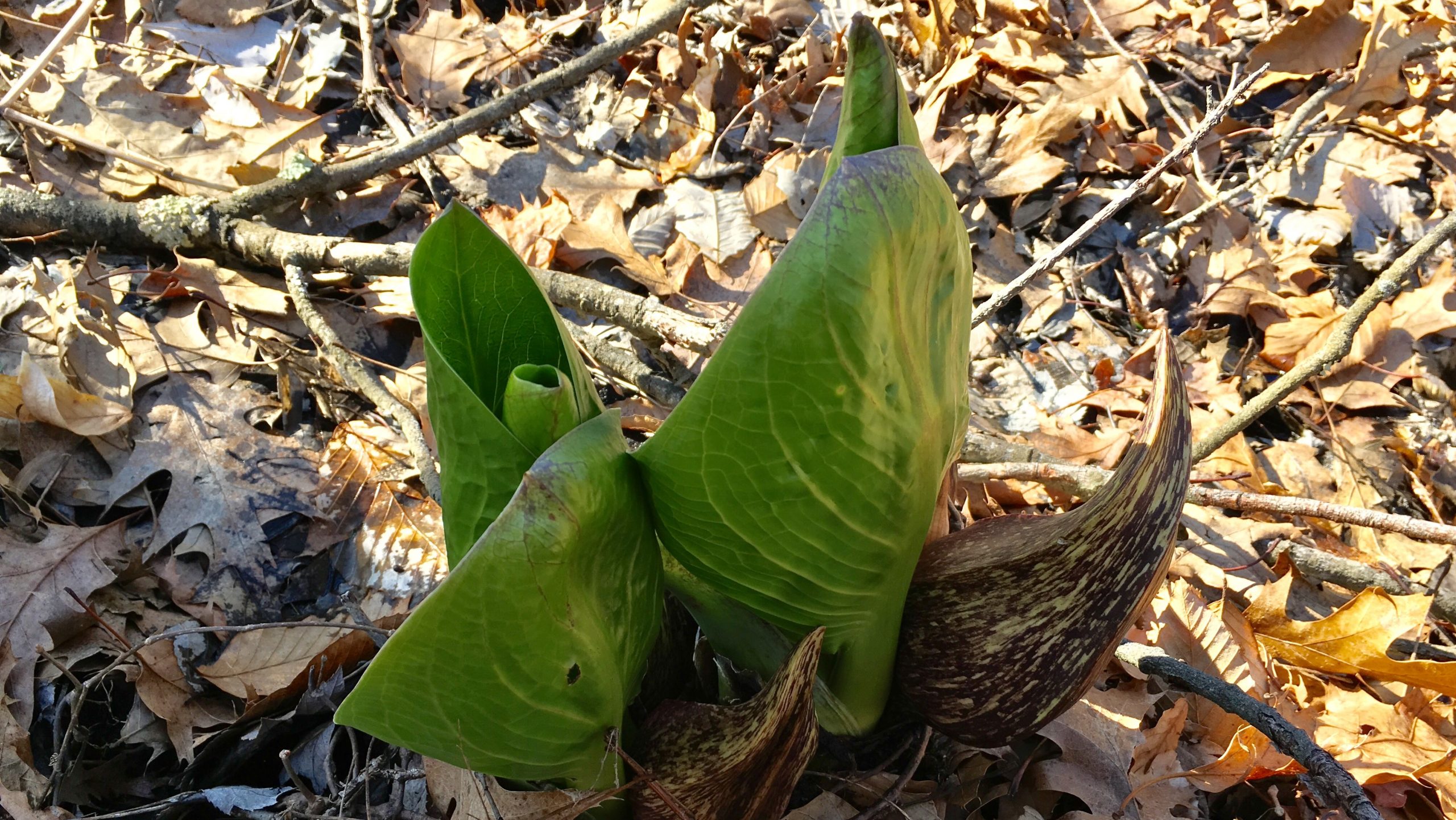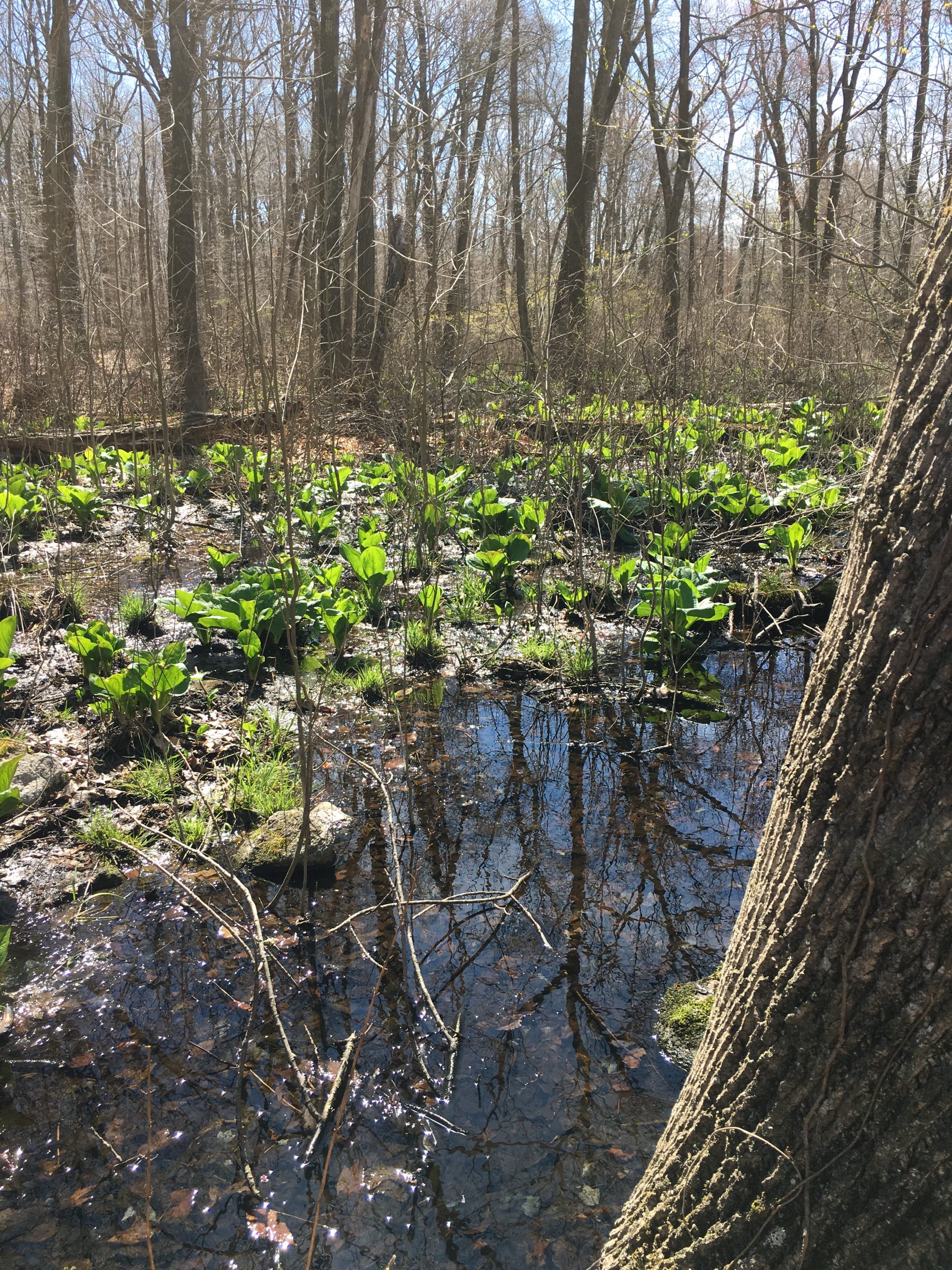Written and photographed by Susan Bergen, NCLT Board Member
Did you know that skunk cabbage is a perennial flower? It is also an invaluable native plant in our wetland habitats.Skunk cabbage is one of the first plants to emerge in the spring – sometimes even in late winter. It has the amazing ability to generate its own heat. The purple hooded flowers (spathes) can melt the surrounding snow and push through the frozen soil and ice. Hidden inside each spathe is a flower stalk (spadix) that is covered with numerous petal-less blossoms. Because these blossoms are not highly visible, the plant produces a ‘rotting’ flesh odor to attract its principle pollinators which are flies and carrion beetles.



Spathe with spadix (flowering stalk) budding (left) and mature
The large green leaves emerge in April, forming a lush groundcover which blankets wetlands through summer and fall. As the leaves can cause a burning sensation when consumed, they are generally left alone by browsing animals.

Emerging leaves with spathe on right
The spreading root system holds nutrients in the soil, prevents erosion and filters impurities from the water. The broad leaves provide cover for birds, frogs, toads, salamanders, snakes, turtles and small mammals. A champion in our local ecosystem!

Streamside at Watson-Symington

Wetlands at Still Pond Reserve
Well said, Susan! I now like the skunk cabbage — from a distance.
When winter seems endless, the sight of Skunk cabbage always makes my heart leap as it promises that Spring is just around the corner. So glad it is featured!
Thanks for this, Susan. Brings back good memories of walking through a soggy Waveny just at this time of year!
They were a hard plant to love,
until I read of their role in the spring
ecosystem. Now, I love them !